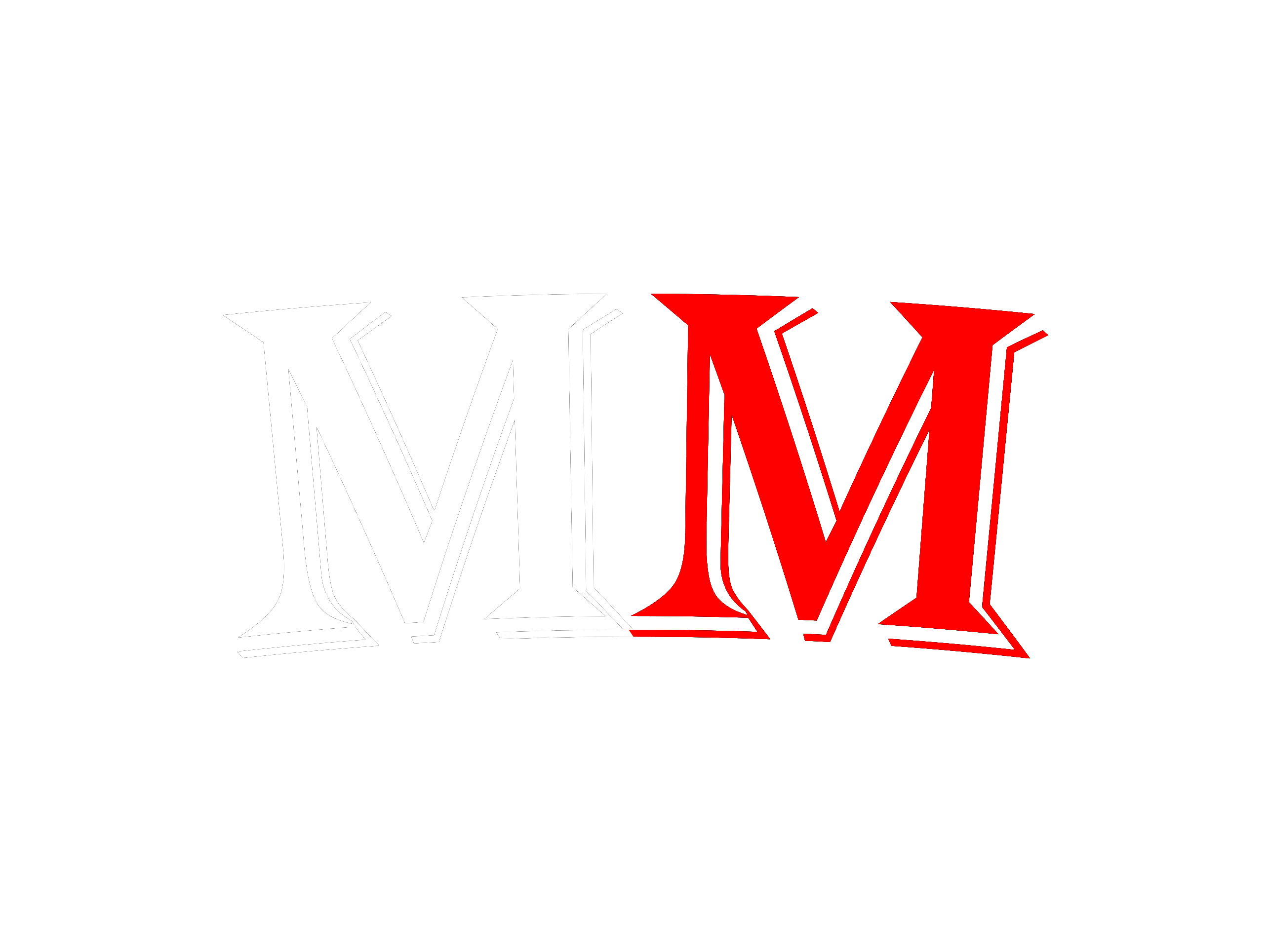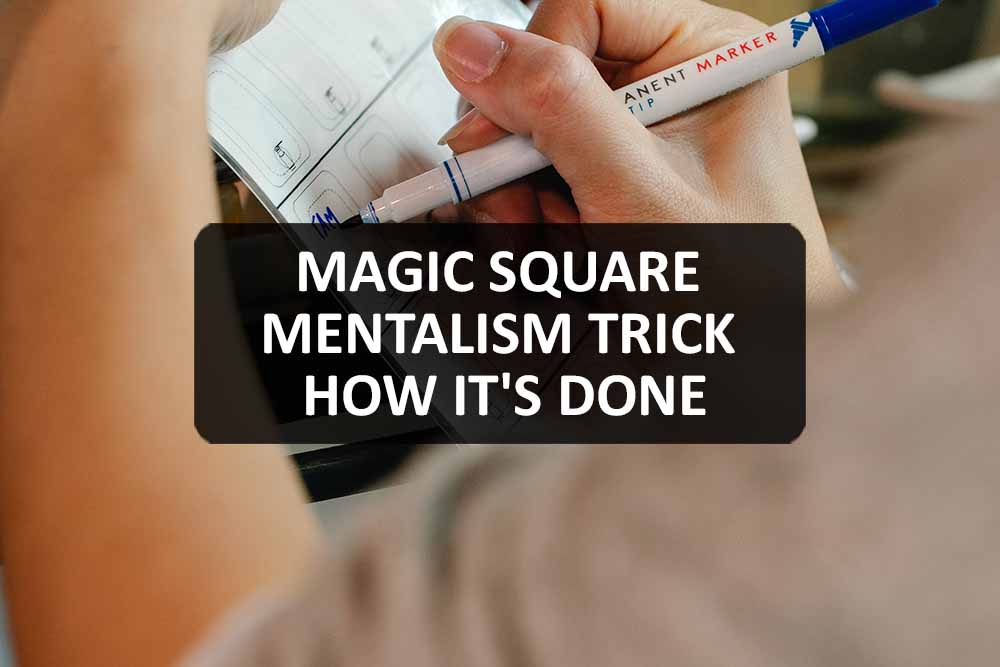Tired of the common mentalism tricks that people usually bust out to energize the crowd? So are we.
Don’t get us wrong, we love these tricks. They’re a classic! But they are used so often that most people already know how it works – and where’s the fun in that?
And this is why we’re here. We want you to be the life of the party. So we’re going to teach you a new mentalism trick.
It is called the Magic Square Mentalism Trick!
So if you’re ready to chuck out the old “grey elephants from Denmark” or “guess my card” tricks, you’re in the right place.
In this article, we’re going to answer the question, “Magic Square Mentalism Trick – how is it done?”
Beware: It’s fun. It’s effective – and it might even get you a date with the girl (or boy!) of your dreams.
What is the Magic Square Mentalism Trick?
A magic square is an arrangement of numbers in a square grid. Each number in every row, and every column, as well as the numbers in the diagonals, all add up to the same number.
Here’s what it should look like after it’s filled out:
| A | 1 | 12 | 7 |
| 11 | 8 | D | 2 |
| 5 | 10 | 3 | C |
| 4 | B | 6 | 9 |
Wait, don’t click away!
We know you hate numbers, and who doesn’t?
But this trick is worth the extra effort. So keep on reading!
Now, let’s talk about how you can execute this trick like a pro.
Explaining How the Magic Square Mentalism Trick Works
For the sake of visuals, we’re pasting the magic square here, too:
| A | 1 | 12 | 7 |
| 11 | 8 | D | 2 |
| 5 | 10 | 3 | C |
| 4 | B | 6 | 9 |
Now, take note of the letters in red. They’re the key ingredients.
In the magic square trick, your volunteer or your audience can name any two-digit number between 22 to 99. Once you finish filling in the boxes, there will be 28 combinations where the boxes will add up to the “right answer”.
The trick here is that the other numbers inside the magic square will ALWAYS be fixed. But don’t tell your audience that!
Now, remember the letters in red? Those are the only boxes you need to fill in.
Let’s say the number you were given was 53.
Here’s the same box but A-D are filled in using the number given by our imaginary audience:
| 33 | 1 | 12 | 7 |
| 11 | 8 | 32 | 2 |
| 5 | 10 | 3 | 35 |
| 4 | 34 | 6 | 9 |
Now, this is where a bit of mathematics comes into play. Let’s tackle this one at a time.
Follow Step-by-Step
Here’s what you do:
Remember the number your audience gave you. In this case, it’s 53.
A – subtract 20 from 53, and write it in box A = 33
B – add one to the number in box A, and write it down in box B = 34
C – add 1 to the number in box B, and write it in box C = 35
D – subtract 1 from the number in box A, and write it in box D = 32
Now here’s the trick.
No matter which column, row, or diagonal you add, you will always get the answer 53.
Here’s an example. Let’s take another look at this box.
| 33 | 1 | 12 | 7 |
| 11 | 8 | 32 | 2 |
| 5 | 10 | 3 | 35 |
| 4 | 34 | 6 | 9 |
If you add the entire first row 33 + 1 + 12 + 7, you will get 53.
Now, if you add vertically from where B is: 1 + 8 + 10 + 34, you still get 53.
Let’s spice things up a bit by adding horizontally!
4 + 10 + 32 + 7 = guess what? It’s still 53!
By now, your audience not only thinks you’re an awesome mind-reader but a math whiz, too!
Why Use Those Specific Numbers In the Other Boxes?
It would be weird if we didn’t explain the other numbers. After all, they’re there for a reason.
If you notice, we’re using the numbers 1 to 12.
As for the correct order of the numbers: the vertical numbers are multiples of 9, and the rest of the numbers 10 -12 are in a zig-zag formation.
“Huh? But 1 is not a multiple of nine, and what zig-zag are you talking about?!”
Okay, let’s have a look at the first example of the magic square we presented. But this time, the multiples of 9 are in red, and the zig-zags are in black. We also made sure to leave boxes A – D blank to avoid confusion.
| 1 | 12 | 7 | |
| 11 | 8 | 2 | |
| 5 | 10 | 3 | |
| 4 | 6 | 9 |
The numbers 54, 18, 36, 72, and 9 are all multiple of 9.
Then we fill in the missing 3 numbers in a zig-zag formation shown in the magic box. See?
This makes it easier to remember what numbers to write down in your magic box.
If you’re still confused, you can check out this magic square Youtube tutorial:
“So, is the magic square trick the same as solving a sudoku puzzle?”
Nope!
While a sudoku puzzle does look identical to a magic square, its function is completely different. Every number inside a magic square is not repeated, unlike with sudoku where they could have multiples of the number 12’s and 54’s.
Another big difference is that each empty cell in a sudoku puzzle has its own answer, while each row, column, or vertical set in a magic square MUST have the same sum.
What Will I Need To Perform The Magic Square Mentalism Trick?
Unlike most party tricks where you may need to carry several props, such as a couple of tampered playing cards, the Magic Square Mentalism Trick only needs a piece of clean paper, a pen, an audience or volunteer, and the performer.
Of course, you may want to practice this trick a few times before actually whipping it out in your next get-together. I mean, it does take some getting used to.
The great thing about this trick is that it doesn’t involve much “body-language reading” or convincing skills. You just need to know the basics of addition and subtraction. So it’s perfect for beginners who want to explore other mentalism tricks.
Conclusion
So that’s how the magic square mentalism trick works!
It’s not magic – it’s just a matter of memorizing number sequences, doing a bit of add and subtract to impress a whole audience!
We hope we were able to explain this mind-boggling performance clearly.
Enjoy and good luck!

